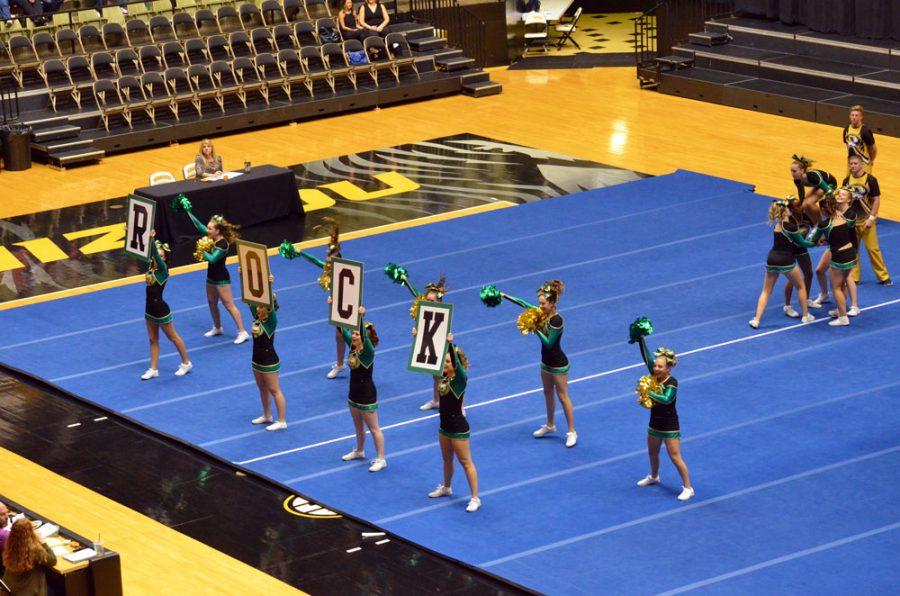D
uring the past 30 years, competitive cheerleading has undeniably changed. Though schools initially restricted cheerleading to sidelines during college or high school sporting events, it now has a competitive league of its own. An entire industry revolving around a set of specialized skills has emerged. Kelly Eagle, the owner of Eagle Elite Cheerleading Gym, has had first-hand experience in the business of competitive cheerleading.
“Competitive cheerleading differs from sideline [cheerleading] because sideline cheerleaders mainly cheer for sporting events and yell actual cheers with motions on the sidelines,” Eagle said. “Competitive cheerleaders practice to compete a fast-paced 2½ minute routine packed with tumbling, stunting and jumps choreographed to music and regulated by United States All Star Federation (USASF) safety and level guidelines.”
Junior Elinor Stanley knows exactly how the two different sides of cheerleading compare. By participating in three forms of cheerleading: sideline, school competitive and independent competitive, Stanley is getting the full experience. Although she started off in high school, just this year, she decided to try out for an entirely competitive team. As a result, she’s gotten to know plenty of people just as passionate as her about the sport.
“People who participate in this sport come from all walks of life and all have very different personalities, but we all have one thing in common; we all love to be out on the floor performing,” Stanley said. “We are not shy, we are (sometimes) loud, and we do everything all-out.”
Not only does cheer require a love for performing, it also requires months of practice to perfect the routine. In fact, competitive cheerleading is one of the few sports which happens continuously year round. This time commitment explains in part why cheer accounted for 65 percent of catastrophic injuries from 1982-2009. Junior Cami Kudrna recognizes the danger of competitive cheerleading and believes the divide between sideline and competitive cheer is what distinguishes one as a sport and the other as an activity.
“When it comes to high schoolers that cheer for their school … I start to question the validity that it’s a sport. Those that learn a routine and represent Rock Bridge at competitions, in my opinion, are participating in a sport,” Kudrna said. “I’m not saying that those who don’t compete aren’t good at what they do or that they don’t put in physical effort, but competition is a huge part of sports.”
Unlike sports such as football or soccer, cheer is a combination of skill in both athleticism and entertainment. Participants need to focus on both smiling and landing a roundoff back handspring tuck. The routines are a whirlwind, with barely enough time to take a breath. Understandably, tensions run high when the outcome of a season relies on such a compact showcase of one’s ability.
“Some challenges that come out of cheer is that you don’t always hit a clean routine, and it happens in front of people. Stunts fall, emotions run high, and it all happens in front of a crowd,” Stanley said. “It is very hard to get back up and pretend like nothing bad happened when you know all eyes are on you, but you have to because it’s your job.”
Competitive cheerleading provides more than athletic opportunity
January 31, 2017



















































































